An official account of all species that have been recorded and reported by birdwatchers and naturalists in the Poole Harbour area since records began.
The data for this list has been extracted from various sources, but George Greens 'The Birds of Dorset', Mansel-Pleydell's Birds of Dorsetshire, Naylor’s reference manual of rare birds and the back catalogue of Dorset bird reports have provided most information. Data is currently still being researched and records will be updated accordingly.
You can view this information in two different ways. Our alphabetical list provides information on the status of each species within the harbour, finder dates and names, photos and favoured locations. By clicking on the Systematic List button you will be presented the full Poole Harbour systematic list which includes status of species, pending records and historical accounts.
To date, 333 species have occurred and have been accepted within the Birds of Poole Harbour boundaries. A further 11 distinct subspecies have also been seen. In addition, we have two species/subspecies which have been recorded, but are awaiting acceptance by the appropriate records panel.
There are a handful of historical records, for which there is currently insufficient information to allow their inclusion onto the Poole Harbour list, but are believed to be genuine records. They are listed at the end of the list.
Finally, there are a number of feral or escaped species that have been recorded within the Birds of Poole Harbour boundaries. They are included for completeness, but are not included on the Poole Harbour list.
We would be interested in hearing details of any species that do not appeared on this list.
The Birds of Poole Harbour systematic list is a PDF which you can view by clicking on the button below. It was last updated on December 2019.
Full Poole Harbour Systematic List
Sabine’s Gull
Latin Name
Xema sabini
Status
Vagrant
Site And Records Information
Rare but almost annual visitor to Dorset. It’s a rare vagrant to the harbour usually associated with very strong southerly gales in autumn. Most records consist of juvenile birds in autumn, but out of the 10 Poole Harbour records there is 1 mid-summer record from Brownsea.
Two 19th century records. The first at Wareham in 1867, and the other in October 1891. A 70 year wait ensued before the next.
1 on 18th June 1961 at Brownsea (H Brotherton, A Bull) had been seen at Peverill Point for the 5 previous days.
A Juv on 16th Sep 1969 on Brownsea was “well described”.
2 on 5th Sep 1987 off Fitzworth
1 on 18th Oct 1987 on Little Sea
1 on 17th Oct 1997 at Branksome Chine (M&M Constantine)
A Juv on 7th Oct 2008 at Branksome Chine (G Armstrong, I Prophet)
A Juv on 10th Sep 2011 at Middlebere (N Hopper, SW Smith)
Sand Martin
Latin Name
Riparia riparia
Status
Summer Visitor & Passage Migrant
Site And Records Information
Mainly encountered as a passage bird with large gatherings over Swineham GP in late Summer. They arrive in early-mid March, but unfortunately breeding sites have been getting more and more scarce with no confirmed breeding within the harbour in 2012. Poole Park boating lake and Swineham GP tend to see the first arriving birds back in the spring.
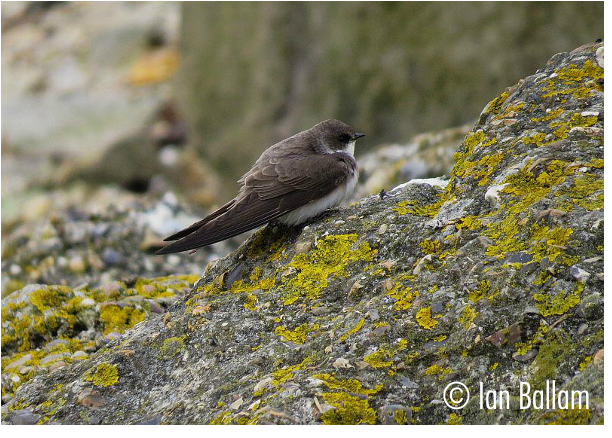
Sanderling
Latin Name
Calidris alba
Status
Passage Migrant & Winter Visitor
Site And Records Information
Never really occurs in large numbers. Winter flocks of around 10-20 usually feed along the beach at Shell Bay all the way up to Pilot’s Point, sometimes roosting in Bramble Bush Bay if the beach is too busy. They also feed just off the sea wall at Brownsea. On spring passage May is the best time with past harbour maximums of 150 at Studland in 1976, whilst in the autumn August is the best month. In recent years a flock of 40 -50 have taken to feeding in amongst the Bar-tailed Godwit in Whitley Lake, Sandbanks during December and January. Also look on the inner shoreline of Bramble Bush Bay during the winter in Studland Beach is busy.
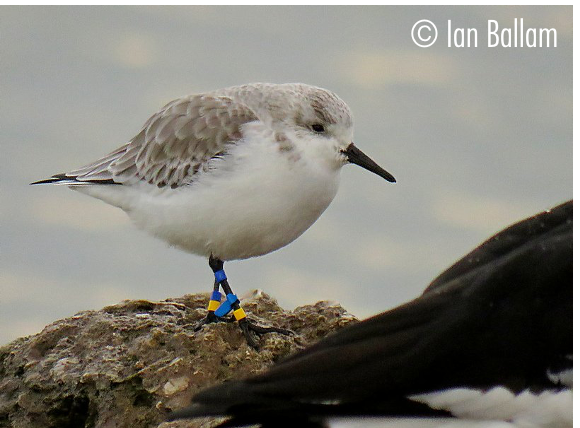
Sandwich Tern
Latin Name
Sterna sandvicensis
Status
Resident
Site And Records Information
A great harbour success story with now over 100 pairs breeding on the Brownsea lagoon giving great views from the hides. Spring migrants arrive back from mid-March and nesting begins in late April. Seen sporadically around the harbour during the nesting period with birds keeping nearer the harbour mouth as they go out and feed. In recent years birds have been over-wintering with a count of eleven in the Wareham Channel December 2011. In winter 2018 they were found to be roosting in Poole Park on the reedy islands.
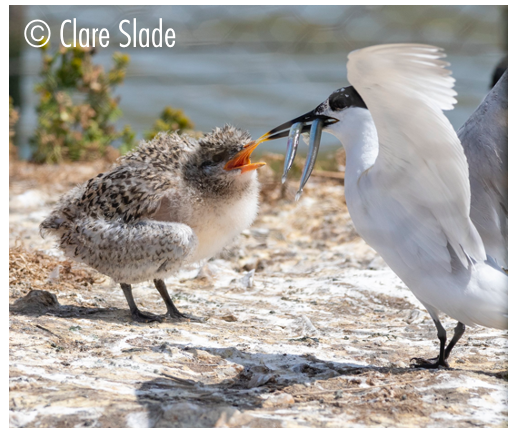
Savi’s Warbler
Latin Name
Locustella luscinioides
Status
Former Breeding Species, No Recent Records
Site And Records Information
Amazingly Savi’s Warbler was a regular breeder in Poole Harbour for a few years during the early eighties. Sadly those birds disappeared and no Savi’s Warbler have been seen or heard of since. The first account of breeding was of 3 singing males along the Holton shoreline in 1981 (D.Godfrey et al), then the following year 2 pairs were observed nesting in the same location but breeding success was unknown.
Scandinavian Herring Gull
Latin Name
Larus argentatus argentatus
Status
Scarce Winter Visitor
Scandinavian Rock Pipit
Latin Name
Anthus petrosus littoralis
Status
Winter Visitor
Scaup
Latin Name
Aythya marila
Status
Scarce Passage Migrant & Scarce Winter Visitor
Site And Records Information
Another sad tale of a once regular winter visitor. Scaup used to winter throughout the harbour with greater numbers on Little Sea, Studland, Arne and in the Wareham Channel. Most years Poole Harbour had 75 % of the counties wintering birds. The earliest being on 4th October 1973 and the latest on 10th June 1969. Birds of Dorset states a high count was c356 birds (a county record) were present in Feb 1963 and including 300+ along the Holton shore.
Other notable historic counts consist of 70 at Lytchett Bay in Feb 1970 and 20 in Poole Park Jan 1974. There was one at Creekmoor Ponds 26th Oct 1998, six at Arne from 17- 28 April 1998 and seven on 1st May 1998 suggesting evidence of spring passage. Mid-summer records are very scarce, but there were three males along the Holton Shore on 10th July 1969 and two males at Arne NR 16th July-4th Aug 1978.
Little Sea, Studland used to be the best place to see Scaup, but now they’re only found in single figures with Swineham GP, Holes Bay south and out on the water in areas like off Shipstal and off Goathorn being good places to look. Could potentially turn up anywhere in extreme cold weather such as Poole Park, Holes Bay and Hatch Pond hosting birds in the past. The 5-year winter average for the last five years is now only ONE per winter!!!!!
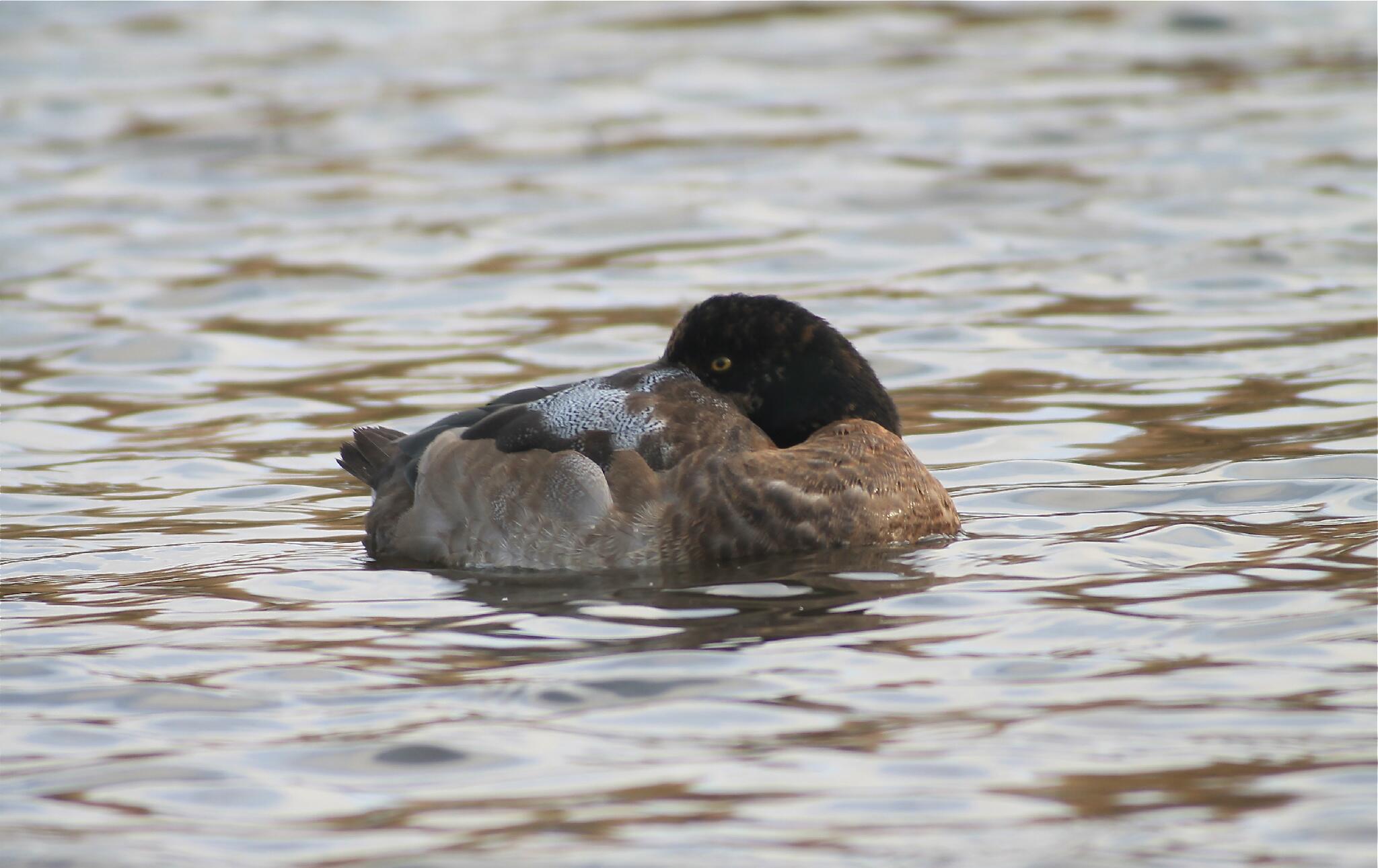
Sedge Warbler
Latin Name
Acrocephalus schoenobaenus
Status
Resident
Site And Records Information
Historic records of ringing at Keysworth and Lytchett Bay have revealed the true extent of Sedge Warbler passage through the harbour in autumn, with a possible 1000 – 3000 passing through each year. In 7 autumns from 1991-1997 a total of 15,413 birds were trapped with a high count of 4,327 in the autumn of 1994. Best day total was a staggering 500 birds on 6th Aug 1995. See totals below….
1991 – 3444
1992 – 1903
1993 – 2659
1994 – 4327
1995 –1808
1996 – 679
1997 – 593
Ringing activity is much lower now but over 500 were still ringed at Lytchett Bay in 2011. Breeding has declined with no recent records from Little Sea/Studland, Brownsea, RiverFrome/Piddle.
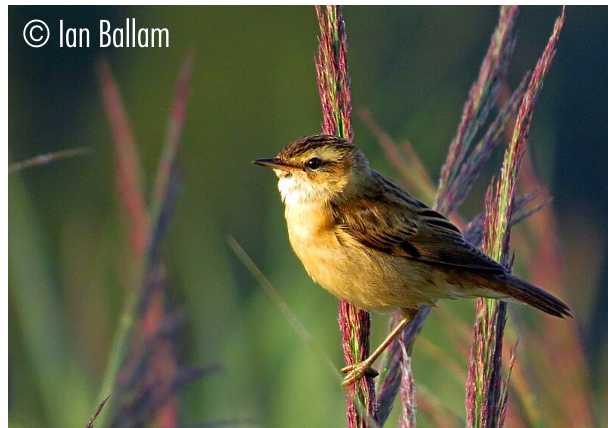
Semipalmated Sandpiper
Latin Name
Calidris pusilla
Status
Vagrant
Site And Records Information
A very rare bird in Dorset and only 1 Poole Harbour record. Like many rare sandpipers the Brownsea Lagoon was an obvious place for this harbour 1st to occur.
A lovely story with the bird first being discovered at midday on the Brownsea Lagoon webcam. Then, a joint team effort between Birds of Poole Harbour staff, The Sound Approach, Brownsea volunteer Ewan Brodie and bird artist Killian Mullarney which led to to it’s identification later in the afternoon.
1 on the Brownsea Lagoon 2nd -3rd September 2013
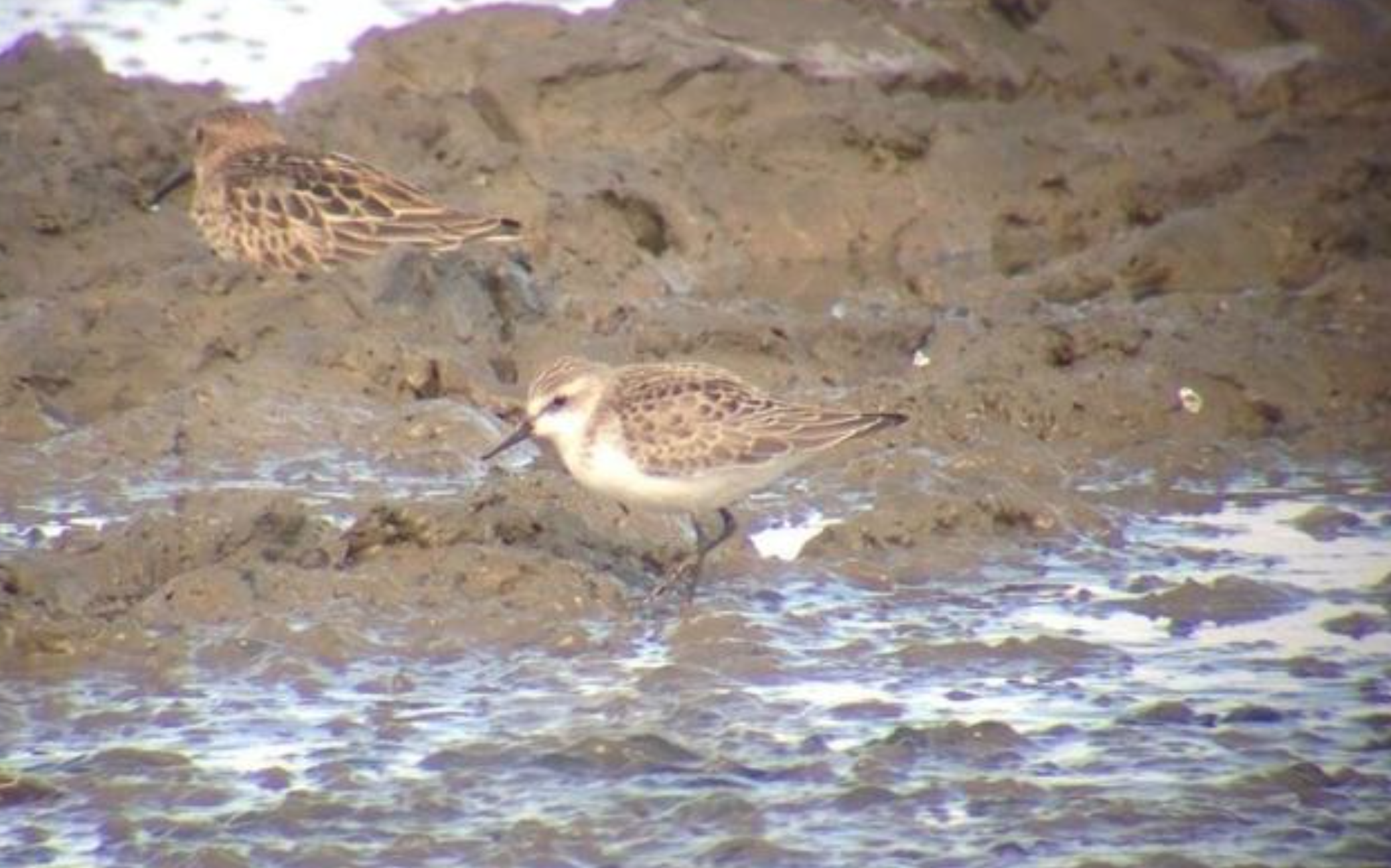
Serin
Latin Name
Serinus serinus
Status
Vagrant
Site And Records Information
A scarce but annual visitor to Dorset. But a rare visitor to the Harbour that remains very hard to “pin down”. There has not been a twitchable bird in the last 30 years. Suggestions in the late 60’s that Serin might colonise southern Britain were fuelled by several breeding records. These included probable breeding in Parkstone 1969 (BTO Atlas 1968-1972). Whilst records in Dorset continued to increase, including in 1985, when near Wareham a pair were present during the breeding season and mating was observed on at least one occasion (Birds of Dorset), records in recent years have declined and the colonisation now looks unlikely.
The 1969 record above was the first for the Harbour. All known records since then are listed below.
1 over on 5th April 1977 at Brownsea Villa
Pair in 1985 at Wareham (see above)
Singing male 19th Feb 1988 at Wareham
1 in early May 1992 at Sandford (A Marsh)
1 in June 2000 at Norden (DBR 2000)
1 on 4th April 2004 on Brownsea Island
A male on 1st June 2004 on Brownsea Island
A singing male on 2nd June 2004 at Studland (perhaps the same as above?)
1 on 1st Nov 2004 over South Haven
A singing male (unseen) on 7th June 2009 at Hamworthy Park
A singing male (unseen) on 18th April 2010 at Brownsea Island
A singing male on 4th April 2015 at Corfe Castle
Shag
Latin Name
Phalacrocorax aristotelis
Status
Resident
Site And Records Information
Favoured feeding areas inside the harbour include the deep-water channel between Brownsea Island and Sandbanks and adjoining water, the northern part of Brands Bay, the deep water channel off Poole Quay and Hamworthy and the Brownsea northern shore. The harbour mouth is another favoured feeding spot with birds quite often sitting on the marker buoys just outside the harbour mouth. Breeding occurs on the cliffs of Old Harry but only small numbers. ‘Birds of Dorset’ states there were 6 occupied nests in 1982 , 3 in 1984 and 3 in 1986 on Ballard Down. They can still breed between June and Oct. A maximum of 130 were logged flying in the harbour mouth on 21st November 1986, with recent regular ‘fly ins’ and ‘fly outs’ during the winter of between 50-80 birds. There’s a known roost at Ballard down and presumably the birds that are seen entering the harbour on winter mornings come from there.
One at Hatch Pond on 21st Jan 1995 was an exceptional inland record!
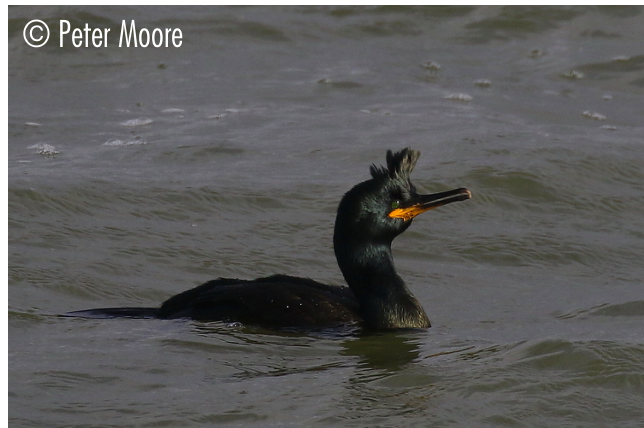
Shelduck
Latin Name
Tadorna tadorna
Status
Resident
Site And Records Information
Shelduck were ‘so disgracefully common‘ that in the 1930’s the harbour was being described as Shelduck headquarters and since more of the land was being managed for wildlife it attracted even more from other wetlands in the south of England. This has given Poole internationally important status for wintering numbers of this species.
Various estimates have been attempted for the full harbour breeding population . In the 70’s Prendergast and Boyes estimated between 50 – 70 pairs and in 1975 Collins came to the same conclusion. The peak summer number for adults in summer was 274 on 10th July 1994 and they have bred on Brownsea (up to thirty pairs 2004), Arne (up to 30 pairs), Lytchett Bay, Hatch Pond, Canford Heath, Green Island, Brands Bay, Upton Country Park, Goathorn and Newtons Bay, Fitzworth and Studland (up to 50 pairs throughout the area). The amounts in brackets were estimates made by full time wardens of the three main reserves.
Once breeding is over in July local crèches build up and the balance of adults leave the harbour for communal moult in the German Waddensea. In June and July its worth looking out for crèches of around 25 different aged young with 2 adults. In the survey in 10th July 1994 five crèches containing 169 juveniles were found. The record number of juveniles was 197 in July 1992. Among other environmental pressures, it’s possible that the increase in recreational disturbance in the breeding season could be affecting their numbers. In October the adults return probably accompanied by birds from Scandinavia and the Baltic making up a regular aspect of a sea watch from Branksome and numbers in the harbour start to build. The maximum count of 4650 in January 1997 came after easterlies and north-easterlies froze the harbour for a week and included 1230 at Keysworth.
Alan Bromby in Birds of Dorset points out that “The Poole gunners had local names for most species of wildfowl which have now largely died out. Shelduck were known as “Burrow Ducks”, Pochards as “Redheads” and Tufted Ducks as “Curre” whilst the term “Ginger Curre” was reserved for Goldeneye”. Notorious ex RSPB Arne warden Bryan Pickess in his days wardening at Arne would only ever guarantee Shelduck and Meadow Pipit on any guided walk on the reserve!
“The worrying decline in Poole Harbours wintering population continued with a maximum of only 1,754 in 2000/2001. Winter maxima throughout the 1990’s were over 2000 birds, but recent winter counts show maximums of just 976 in February 2020.
Despite their decline, they’re one of the easiest birds to find on the southern sides of the harbour, and is evident in most areas with exposed mud on the low tide.
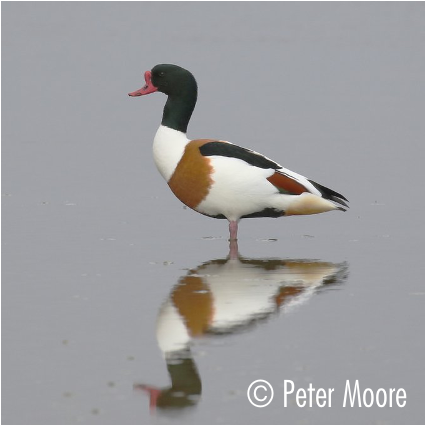
Shore Lark
Latin Name
Eremophila alpestris
Status
Vagrant
Site And Records Information
The first Poole Harbour record was at Whitley Bay on 2nd December 1940.
The only other records relate to series of sightings in 1973 and 1974.
One seen at Studland beach area was first spotted on 18th February 1973 (Dr D Godfrey). It was still present on 18th March (Dr D Godfrey, P Hawkins, JR Cox).
The following winter two were seen at Brownsea Lagoon (A Wise) on 15th December 1973. Mr and Mrs Moore saw one at Studland on 15th December and it was seen again on 29th December (BJ Frampton). On 2nd January 1974 it was found feeding with four Snow Buntings (P R Knight) and was watched by at least 10 observers until 23rd February when it was seen in company with five Reed Buntings, to which it was aggressive and drove them off with open bill.
A more recent addition to the list would be most welcome!
Short-eared Owl
Latin Name
Asio flammeus
Status
Passage Migrant & Winter Visitor
Site And Records Information
Although autumn and winter are the traditional months for recording Short eared Owls there are many records from March and April which would indicate a certain amount of spring passage occurs through the harbour. Middlebere, Swineham, Bestwall, Slepe Heath, RSPB Arne Moors and Hartland Moor have all held birds in the last few winters. Studland Heath, Godlingston are also traditional hot spots. Numbers vary each year with some winters seeing none and others up to four or five. In winter 2016 a roost of 3 birds was found on Slepe Heath.
Recent records:
2023
Hartland Moor – 1 on 19th Feb.
West Poole Harbour – Singles around Arne Moors/Hartland Moor from 1st to 18th Nov, with 2 on 14th & 17th Nov.
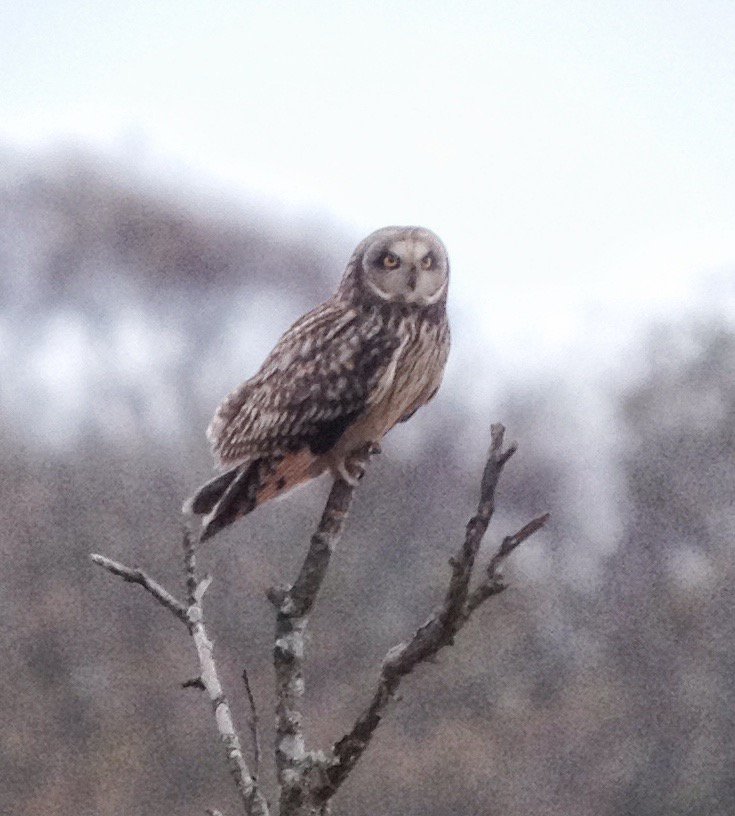
Short-toed Eagle
Latin Name
Circaetus gallicus
Status
Vagrant
Site And Records Information
An incredible encounter of 1 over Coombe Heath, Arne RSPB reserve on May 31st 2014 (J Hunt), ten minutes after it had originally been discovered at Morden Bog, Wareham Forest. This is only the 3rd ever for Britain and a very welcome addition to the Poole Harbour list.
Amazingly, a second record occurred when what was initially thought to be a Short-toed Eagle flew over Old Harry on October 4th 2020, heading towards Christchurch over Poole Bay. The bird was getting hammered by the local gulls, however, based on the views the observer discredited the sighting as he felt he couldn’t confirm the ID. However, later in the day a Short-toed Eagle was rescued from Hengistbury Beach having been found on the shoreline by walkers. The bird was still alive but in a bad way and it sadly later died in care the following day. Despite the sad outcome, the original finder (Jol Mitchell) was able to to confirm his original ID and rest easy that he wasn’t hallucinating on the sunny but cold October afternoon!
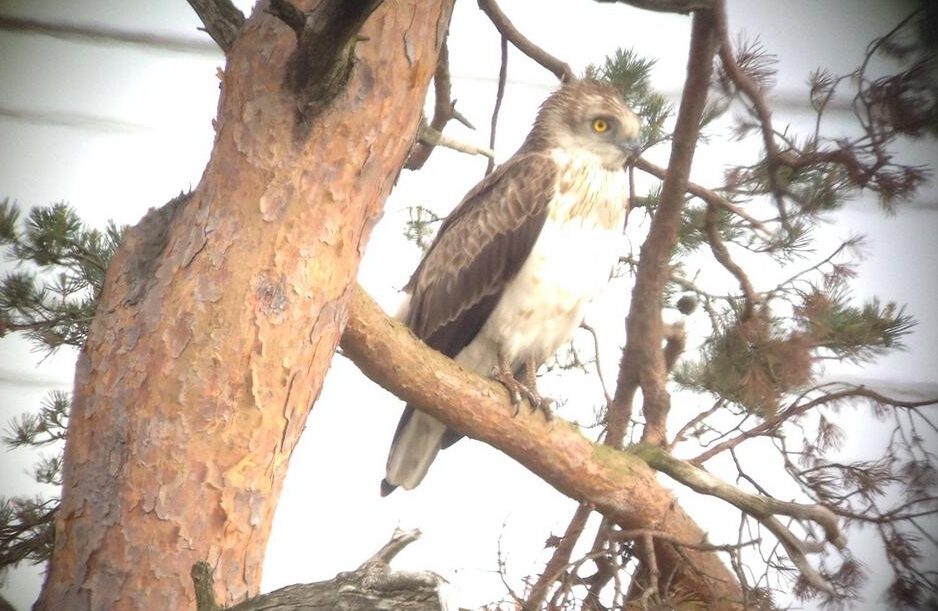
Shoveler
Latin Name
Anas clypeata
Status
Resident - scarce breeder
Site And Records Information
Poole harbour is a nationally important wintering area for this species with over a third of the counties birds historically on Little Sea. Sadly, very few Shoveler (if any) use Little Sea any more. Other good spots for them nowadays are the Brownsea Lagoon, Holes Bay NW and Hatch Pond. They arrive in October and stay often displaying until early April.
They first bred in 1926 and occasionally until 1952. A pair and two juveniles were in Poole Harbour 26th June 1955 and young were seen in 1956 then nothing until 1982 when 10 eggs were laid on Brownsea but were deserted by the female. Then on Salterns Marsh at Arne in 1987 where a pair raised seven young. Breeding occurred again in the harbour in 1995 and most recently again on Brownsea in 2018. Numbers have fluctuated over the past sixty years with an average of around 100-200 each winter with the maximum winter count of 276 in December 2019. The average 5-year winter total population is 140 per winter.
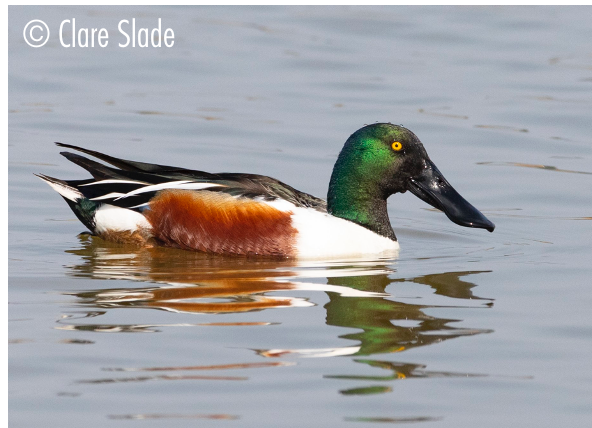
Siberian Chiffchaff
Latin Name
Phylloscopus collybita tristis
Status
Scarce Winter Visitor
Site And Records Information
As Common Chiffchaff have increased as a winter visitor to Dorset so has the occurrence of Siberian Chiffchaff. The first was found at Studland on 22nd Nov 1998 and remained there for the winter (S Robson et al). Gradually during the last 30 years this race has now been found to be a scarce but regular winter visitor. Identification of some has been proven by analysis of sound recordings and DNA analysis. Birds can occur anywhere but locations that are close to water and are sheltered seem to be favoured.
The PC World drainage channel at Holes Bay, Lytchett Bay, Norden sewage works and Swineham are the favoured locations. Three have been seen together on several occasions. Listen out for the flatter piping note as opposed to the Common Chiffchaff ascending note.
Recent records
2023
Arne RSPB – 1 on 24th Jan.
Holes Bay – 1 on 16th Jan in PC World Drain.
Norden Sewage Woks – 1 between 9th Jan and 4th Mar.
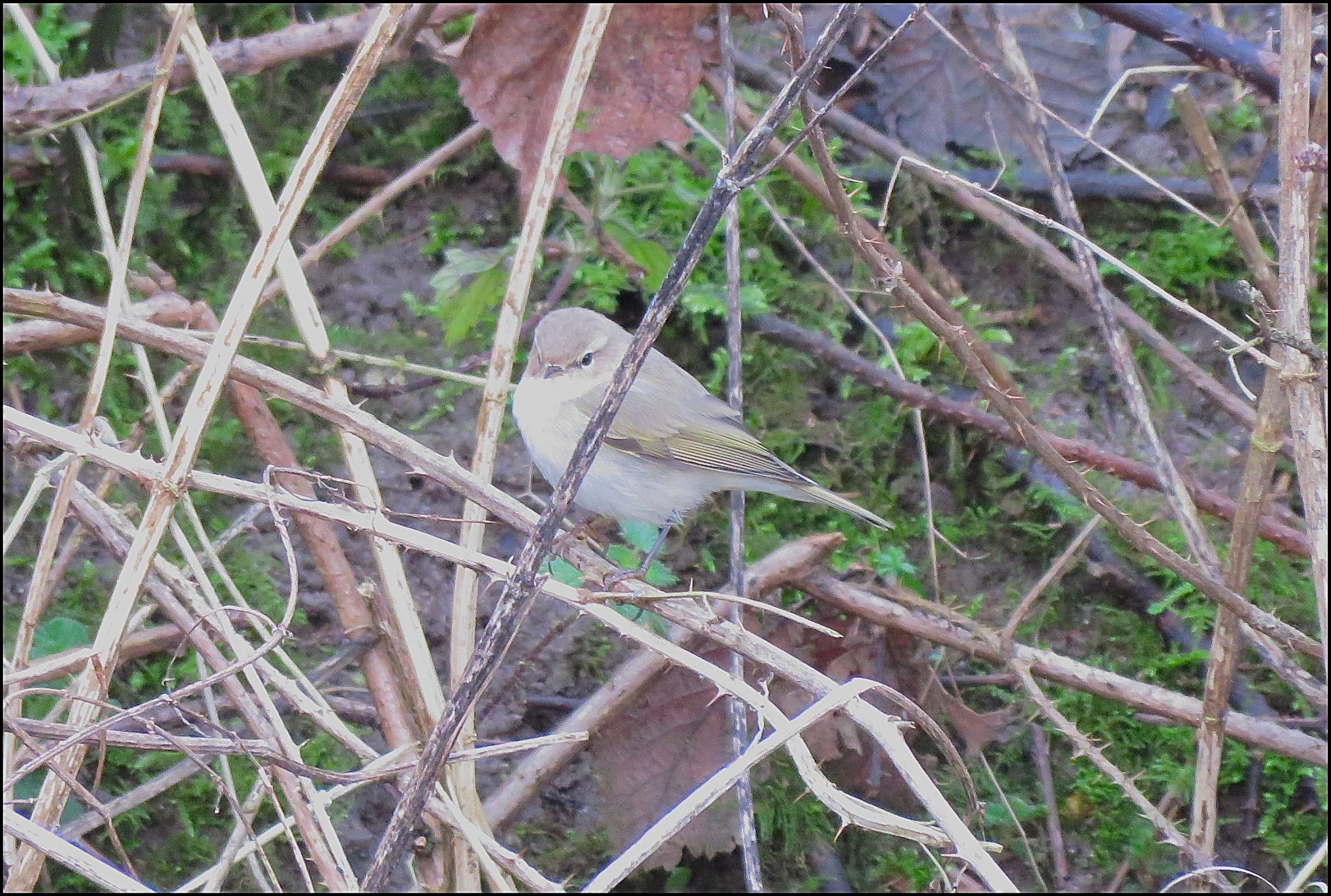
Siskin
Latin Name
Carduelis spinus
Status
Resident
Site And Records Information
No longer do you have to put out red netted bags of peanuts to get siskin in your garden. Breeds across the harbor in moderate numbers with areas of pine woodland being even more popular. The ever increasing breeding status of Siskin has made it easy to see them in summer as well as winter with adults bringing their young to niger seed feeders around the harbour. Large numbers of up to 500+ can be counted on passage during the autumn from South Haven passing the harbour mouth in the early morning.
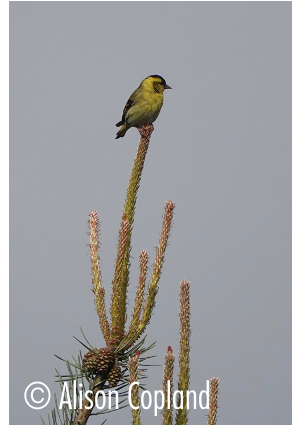
Skylark
Latin Name
Alauda arvensis
Status
Resident
Site And Records Information
Breeds at Godlingston, Arne Moors, Wareham Water meadows, Hartland Moor and some of the other heathland sites. Can be encountered in large numbers during cold weather with records of over 200 birds passing over Brownsea, Arne, Studland and a whopping 10,000 seen flying west over Poole Bay on December 31st 1961. Passage birds occur fairly frequently from suitable vantage spots like South Haven, Ballard and Glebeland’s in October and November.
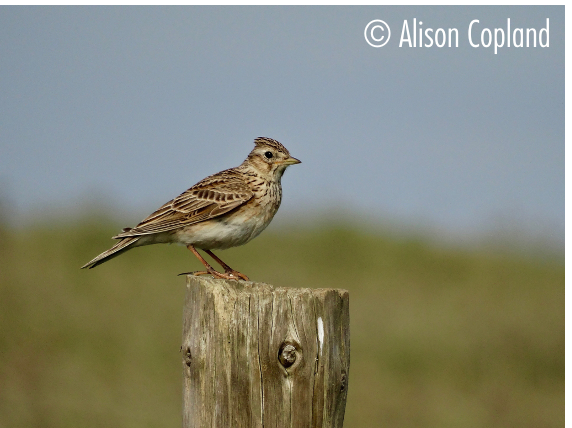
Slavonian Grebe
Latin Name
Podiceps auritus
Status
Winter Visitor
Site And Records Information
Poole Harbour hosted nationally important numbers of this species until the late 90’s. The maximum count is 42 on 15th Feb 1981 in Studland Bay. Whilst the number of birds wintering in the UK is broadly stable in the range 100-125, the number visiting the harbour have reduced significantly in recent years. Currently it is quite a hard bird to find.
Maximum winter counts: *exceptional number significantly above decade average.
1950’s – 1 to 23*
1960’s – 1 to 16
1970’s – 9 to 30*
1980’s – 16 to 42*
1990’s – 9 to 20
2000’s – 3 to 8
2010’s – 2 to 12*
Away from the favoured areas around Studland there have been frequent records from Swineham GP’s and occasional records from other parts of the open harbour.
The earliest record is 16th Aug 1998 at Brands Bay and the latest come from late April when birds have frequently been seen in full breeding plumage.
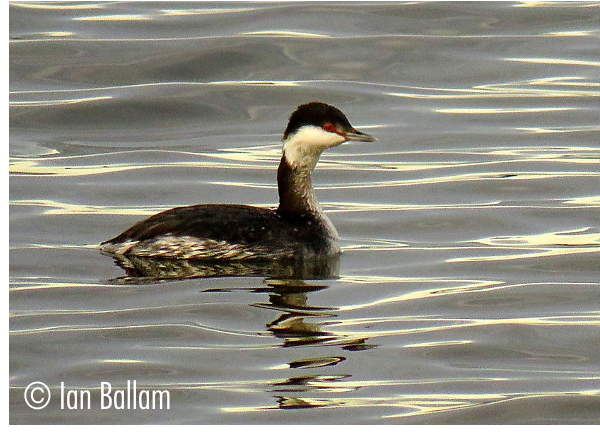
Smew
Latin Name
Mergellus albellus
Status
Scarce Winter Visitor
Site And Records Information
Massive decline in wintering numbers with the Wareham Channel often hosting 60-80 birds in the 1950’s. However regular wintering stopped after 1962/3 and numbers declined rapidly. Now it seems only extreme cold weather brings birds to the harbour with Swineham GP, Holes Bay and the Wareham Channel being good places to look. Also possible at Poole Park. The best time to find to try and find Smew is between December and March and the earliest date for the harbour is the 7th November 1976 and the latest on 16th March 1958. A redhead Smew had been present for three winter periods (2013/14, 14/15, 15/16) with one in Lytchett Bay and on Lytchett Fields during 2013/14, one in Holes Bay during 2014/15 and another in Holes Bay during Dec 2015. These could possibly all relate to the same bird. Records from the open parts of the harbour are possible too with an adult male off Baiter on the evening of Dec 31st 2008.
To show how much things have changed here’s a nice account of a (semi) historic record where 3 redheads and a white nun were present in Holes Bay along with a male Goosander, a Red-throated Diver, 1 Scaup and 350 Pochard on the 5th January 1997. We don’t even get 4 Pochard each winter these days, let alone 4 Smew!
Recent Records
Lytchett Bay – 1 from 3rd – 22nd Jan 2014
Holes bay – 1 from Jan 4th – Feb 25th 2015. Plus again on 7th Dec into 2016
Furzey Island/South Deep – 2 ‘redheads’ on February 2nd 2015
2016
Holes Bay 1 female present 1st Jan-23rd Feb (from 2015).
Studland Bay 1 female on 25th Feb off Knoll Beach was presumably the same individual as above.
2017
Holes Bay 1 redhead 10th Jan to 26th Feb, occasionally seen from Upton CP.
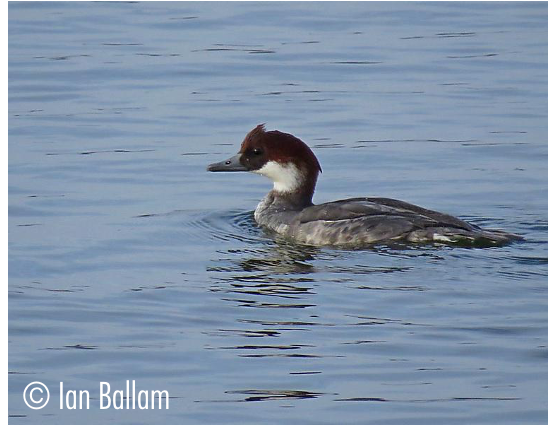
Snipe
Latin Name
Gallinago gallinago
Status
Resident
Site And Records Information
Any of the wet heathland and water meadows bordering the harbour hold Snipe in the winter. Large flocks of up to 200-300 used to be frequent but now most sites hold around 10-30 birds with numbers rising in extreme cold weather. Sunnyside Farm, Wareham Water Meadows, Lytchett Fields, Middlebere and the Frome Valley all hold good numbers in the winter. Migrants begin to appear back in mid August with peaks occurring in December and January. Breeding may still occur on Hartland Moor with drumming last heard in spring 2015.
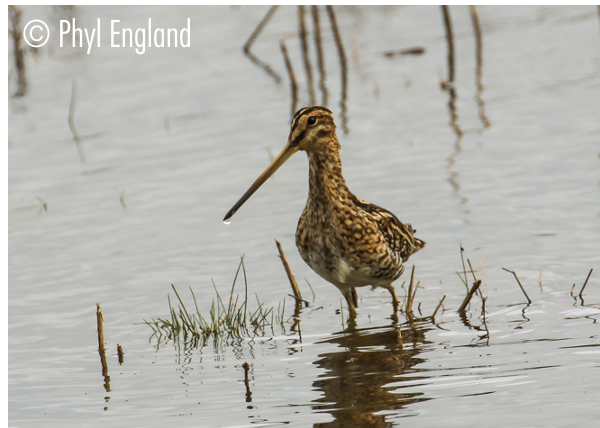
Snow Bunting
Latin Name
Emberiza citrinella
Status
Scarce Passage Migrant & Winter Visitor
Site And Records Information
By far the best chance of seeing Snow Bunting is in and around the dune systems of Studland during cold winters. Birds have been recorded elsewhere in the harbour at Arne, Lytchett Bay, Poole Quay, Parkstone and Brownsea.
Studland Records…..
3 from 17th Dec-3rd Feb 1961-62
4 from 28th Dec-16th March 1968/9
3 31st Dec -14th March 1970/71
4 from 25th Nov-14th March 1973/74
2 -3 on 10th Nov –14th Dec 1975/6
4 from 8th Nov – 19th Feb 1991/92
1 from 19th to 20th November 2001
1 on 23rd October 2005
1 on 5th November 2005
1 on 5th November 2008
1 on 24th October 2009
1 between 1st – 3rd March 2010
1 on October 1st 2015 over South Haven, Studland
1 between 1st February – 12th March 2017 at Shell Bay, Studland
Other Sites
2 on 17th October 1971 on the Brownsea sea wall
1 on 11th April 1976 at Swineham
1 on the 23rd December 1993 at Lytchett Bay
1 on 26th October 1996 over Ballard Down
1 on 24th November 2000 at Middlebere associating with Chaffinch
1 on 22nd November 2001 at Arne
1 on 6th January 2003 at the Rockley viewpoint car park
1 from late Dec 2009 until 25th March 2010 at Poole Docks
1 on 5th November 2012 at Swineham
1 on 21st November 2015 at Arne
1 on 22nd October 2016 on Poole Docks
1 on 22nd Jan and on 16th & 17th Feb 2017 at Old Harry, possibly the same bird.
1 between South Haven, Shell Bay and Pilot’s Point between 4th & 11th March 2018
1 on 1st of Nov 2021 was joined by a second from 5th – 9th Nov with a single staying until the 11th
1 on 21st Nov 2023 at Ballard Down
1 between 8th & 11th Nov 2023 Redhorn Quay, Studland
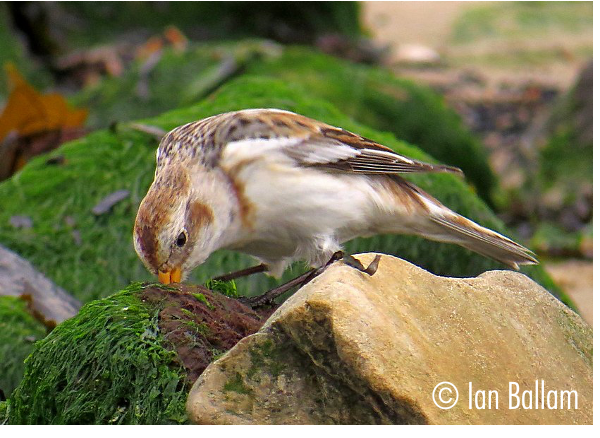
Sociable Plover
Latin Name
Vanellus gregarius
Status
Vagrant
Site And Records Information
1 on 18th October 1995 in Brands Bay. A stunning record considering this is a critically endangered species. The bird was originally found at Warmwell with a flock of Lapwing and was witnessed by most Dorset birders. However it was only observed by two people in Poole Harbour, gripping off many die hard Poole Harbour listers.
Song Thrush
Latin Name
Turdus philomelos
Status
Resident
Site And Records Information
Fairly common in most habitats around the harbour with large cold weather movements sometimes occurring, noticeably 6205 birds dropping in to South Haven on the 16th October 2005. Song Thrush are a regular and common night migrant over the harbour during October and November when their ‘tic’ call can be heard in amongst the Redwing and Fieldfare.
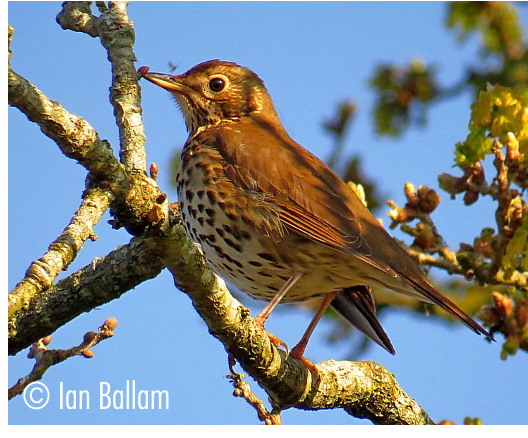
Sooty Shearwater
Latin Name
Puffinus griseus
Status
Vagrant
Site And Records Information
There’s historical record of one caught alive in Poole Harbour 8th June 1877 was the first record and there were no further sightings for 133 years.
2 on 28th Oct 2000 from Branksome Chine (J Lidster). These were part of what was, at the time, a record year for Dorset.
1 on 7th Oct 2008 from Branksome Chine (I Prophet)
1 on 23rd September 2019 from Branksome Chine (P.Morton)
1 on October 2nd 2020 west across Poole Bay (M.Constantine)
Sparrowhawk
Latin Name
Accipiter nisus
Status
Resident
Site And Records Information
A steady, perhaps increasing breeding resident, they can be encountered in most places around the harbour. Potentially 10-15 pairs regularly hunt and display throughout the whole harbour area, which compared to 1962 when only 6 pairs could be suspected of breeding in Dorset! Sparrowhawk are frequently viewed at point blank range taking small birds off the feeders at Arne. Lytchett Bay, Middlebere, Holton Lee, Upton Heath and the urban areas of Poole are all regular sites.
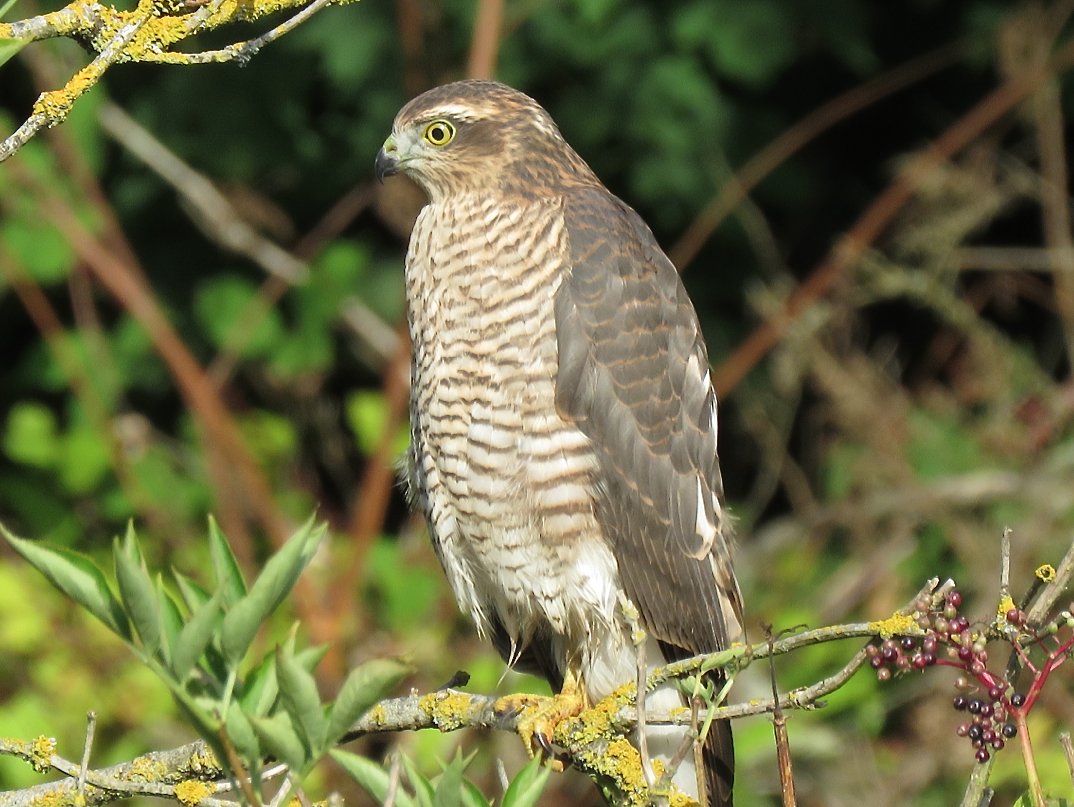
Spoonbill
Latin Name
Platalea leucorodia
Status
Resident
Site And Records Information
Between 2016 and 2018 we commissioned Nick Hopper to survey all Spoonbill activity and behaviour in Poole Harbour. Below are extracts from his full survey titled “The Ciconiiformes of Poole Harbour”
History of Eurasian Spoonbill in Poole Harbour
Formerly bred in Southern Britain in the 16th Century, known then as the shovelard. It is assumed that at this time all brackish estuaries were occupied by breeding Spoonbills. Quite possibly including Poole Harbour. Writing in 1799, Richard Pulteney described Spoonbill as an accidental visitor, being seen ‘a few years ago near Poole’. Although in his 1888 work Mansel Pleydell quotes Pulteney as saying that in his day, ‘it was not infrequently to be seen in the neighbourhood of Poole’. Whatever the situation, there were only three documented records during the 1800’s. One was shot in Lytchett Bay in June 1841, one in Poole Harbour in November 1848 and an immature bird shot at Poole in October 1881.
Perhaps in reality there were more occurrences; Mr Pike for example mentioned he had seen Spoonbills ‘several times in autumn about Poole Harbour and the Corfe division of the estuary and were also occasionally observed in spring’. Three more birds in 1906, four in 1917 and apparently five birds on December 25th 1938, followed by a few more records in the 50’s and 60’s. An increase in records in the late 70’s and early 80’s, followed by four blank years at the end of the 80’s until two birds wintered in 1989, since when records have been annual. The same bird is thought to have been responsible for a series of winter records through the early 90’s, until two birds wintered in 1995.
Numbers then pottered along with one to three birds being seen each year, until a remarkable count of 17 birds at Bestwall on 9th October 2006 heralded the start of something big! The following year saw 27 birds, then a bit of a retracement with numbers dropping to 14 in 2010 but rising back to 28 birds in 2011. Thirty-four birds in 2013 were then followed by an even more remarkable run of recorded breaking counts year on year rising to 75 in October 2017 and then 80 in 2018!
The count of 81 on Brownsea Island on 7th Oct 2023 was the second highest ever for the county, only exceeded by the 84 on Brownsea on 6th Oct 2022. Then, in October 2025 an incredible 116 were logged on the Brownsea Lagoon smashing the previous county record.
Without a doubt the best places to see Spoonbill is on the Brownsea Lagoon (Aug – Oct), Shipstal Point, Arne (Oct – Mar), the Wareham Channel (low-tides Oct – Mar) and in the Middlebere Channel depending on the tide (Aug – April). The sand spit out in front of the Shipstal hide is always a good spot along with the warmer waters of Holes Bay in severe cold weather. They also frequent Brands Bay occasionally and Lytchett Bay/Fields.
The big question is though……when are they going to breed?
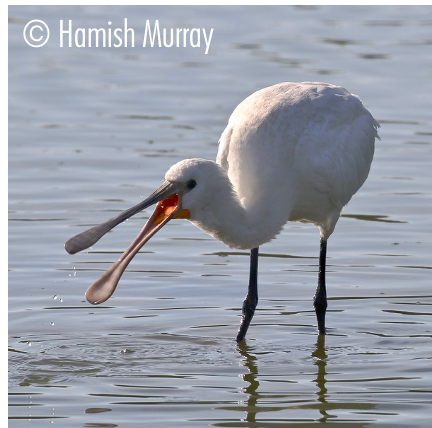
Spotted Crake
Latin Name
Porzana porzana
Status
Scarce Passage Migrant
Site And Records Information
A nest was found near Wareham in 1868 and this the only record of breeding in the harbour.
1 on 3rd Jan 1954 at South Haven, Studland (H Brotherton). The notes read…“at close range and in good light” when her dog flushed it from a ditch alongside the ferry road at South Haven, “it disappeared into gorse at the waters edge and could not be flushed again”
1 on 12th February 1961 at Round Island (H Brotherton)
1 – 2 intermittently between on 25th September 1969 and 5th January 1970 on Brownsea
1 on 26th May 1971 at Little Sea, Studland ( P Hawkins)
2 on March 5th 1972 on Brownsea
1 singing on 3rd July 1973 at Arne Moors (SPW Corbett)
1 on 27th August 1974 on Brownsea
1 on 27th October 1979 on Brownsea
1 on 22nd October 1983 at Lytchett Bay (G Dutson)
1 on 10th September 1988 on Brownsea
1 trapped on 18th Aug 1991 at Keysworth . Another present 22nd August – 14th September, trapped on first date (per SRG)
1 on 19th April 1992 at Lytchett Bay (G Armstrong)
1 singing on 31st July 1994 at Keysworth (S Robson et al)
1 on 28th August – 6th September 1994 at Keysworth, trapped on both dates (per SRG)
1 on 27th August 1996 at Keysworth, trapped (DS Dicker, R Gifford)
1 singing 11th – 14th May 2006 at Arne Moors (Ma Constantine, N Hopper, M Robb et al) sound recorded.
1 singing 25th – 27th May 2009 at Brownsea (N Hopper, C Thain)
1 singing and sound recorded on 5th – 6th May 2014 in the area of Bestwall (P Morton and N Hopper)
1 from 20th July to 1st August 2014 at Lytchett Bay (I Ballam et al)
1 on 19th September 2016 at Lytchett Bay (I Ballam, S Robson)
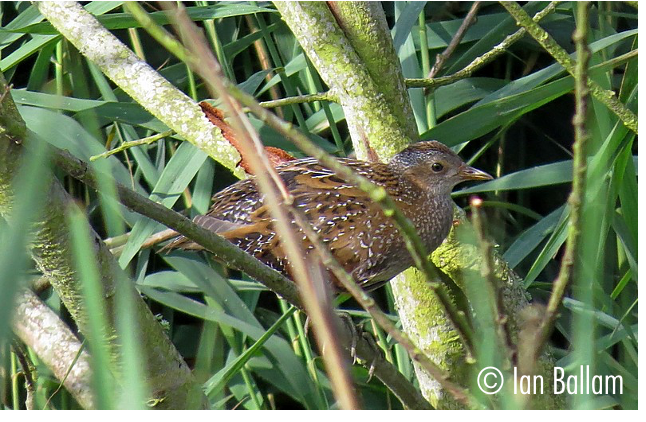
Call 01202 641 003
© 2025 Birds of Poole Harbour Registered Charity No. 1152615
